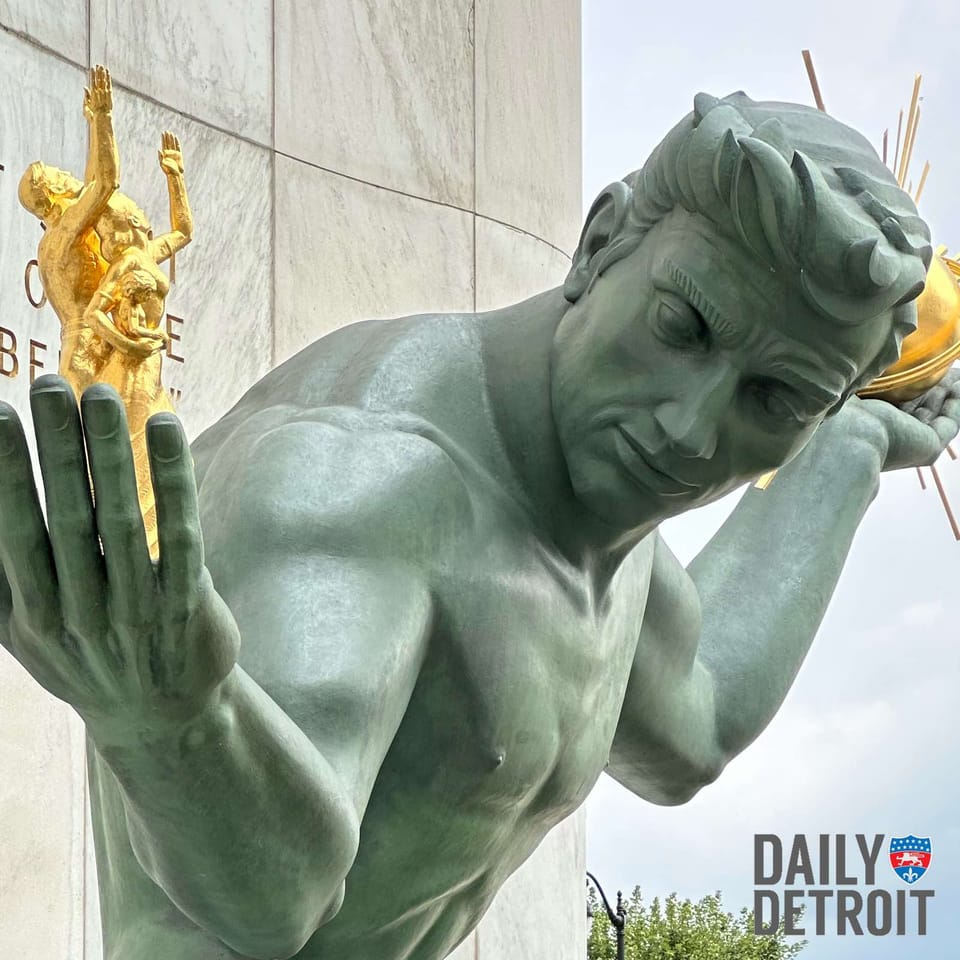Around the corner and down the way from the Cass Corridor-ish Daily Detroit blogquarters is a building with a unique facade. It has a triangular bit over the door, and if walls could talk, it would have decades of stories.
I’m talking about a bar that is no more – it is one that probably few have ever heard of, but was important in the development of the Detroit music scene.
The Gold Dollar.
Let’s allow “Music USA: A Rough Guide” to lay out the description of the most modern incarnation, launched in 1996 and closed in 2001:
Opened in the summer of 1996, this venue is devoted to “promoting new bands, local writers, emerging artists, and all local talent,” also presenting some theater and performance art. The occasional recognizable band with a Sub Pop contract or some such connection comes through, but the calendar is mostly filled with unknowns; it’s a good place to see out-of-town underground bands that haven’t yet established a wide reputation.
The Gold Dollar website is in a sort of time machine archive mode, and is a beautiful throwback to the wild west days of the Internet before we Twittered our Facebooks.
They say what is put on the web is there forever, but the links on the old Gold Dollar site is proof that saying it is not always true, as story links to the Metro Times and Free Press as well as others are no longer to be found thanks to modernization and redesigns (hey MT – one of the best things about you is you’re the alternative record to the history of the city, so bring that cover story and others out of storage, k?).
The Gold Dollar was the often under appreciated by the general public hub of garage rock and creativity during its modern life from 1996-2001. A former lounge that opened in 1934, in the 50s it turned into a drag bar and then was closed for awhile.
It was the kind of place where only one of the beers was $10, everything else was under $5, and you could get a frosty Stroh’s for $1.50.
These are Detroit bar prices most who have been here awhile can remember – prices you could still see quite often until just three or four years ago.
To go with your affordable beer, you had music from countless acts, including … Jack White (and the various iterations of bands around him).
380-some words later, here’s the payoff. Good recordings from inside the Gold Dollar are now going to be made available, thanks to Third Man Records, Jack White’s record company.
Listen.
Here’s an excerpt from one of the descriptions, instead of re-writing it:
Opening for Royal Trux on September 16th, 1999, Jack White and the Bricks were actually never called that name during their brief existence across a half-dozen (or so) shows. We’ve reproduced the flyer proclaiming “Jack White Band” to prove it. While Vault Package #15 showcased a live recording of the Bricks that left a lot to be desired in regards to fidelity, the multitrack masters from the Gold Dollar were available to create a truly stellar mix here. From Brendan Benson’s harmonic accents (on both vocals and guitar) to Kevin Peyok’s even-keeled bass runs, through Ben Blackwell’s competent drum work…the performance here is sublime. If you’ve ever daydreamed about hearing Jack tackle White Stripes songs with the attack of two guitars behind them…this show will delight. Divergent interpretations of Stripes’ catalog staples “Candy Cane Children” and “You’ve Got Her in Your Pocket” do not disappoint. The otherwise unreleased Jack White song “One and Two” is particularly fascinating. Rounded out with a cover of Little Richard’s “Ooh! My Soul” (which may be an inspiration for “Fell in Love With a Girl”) and what exists here is the definitive document of this outfit.
The way to get your paws on these unique releases is kind of unique. Third Man runs a subscription service that’s $60 a quarter (there’s a cheaper one, but it doesn’t include the these goodies). You’ll get vinyl records, reproduction posters, and other goodies depending on the package. January 31 is the cutoff date to sign up and get this one.
There also are other Vault sets of theirs that have Gold Dollar material, but this is what caught our eye. We may never get the Gold Dollar back. But White’s dedication to the authentic Detroit sound and story that often gets forgotten in the rush to talk about the newest apartment building or craft beer shop is laudable.
Hopefully, like with many facets of the city, the way forward is to build upon, not bulldoze over.
After all, if we completely erase and forget our past, we lose that spirit that draws people to be involved in Detroit in the first place.














